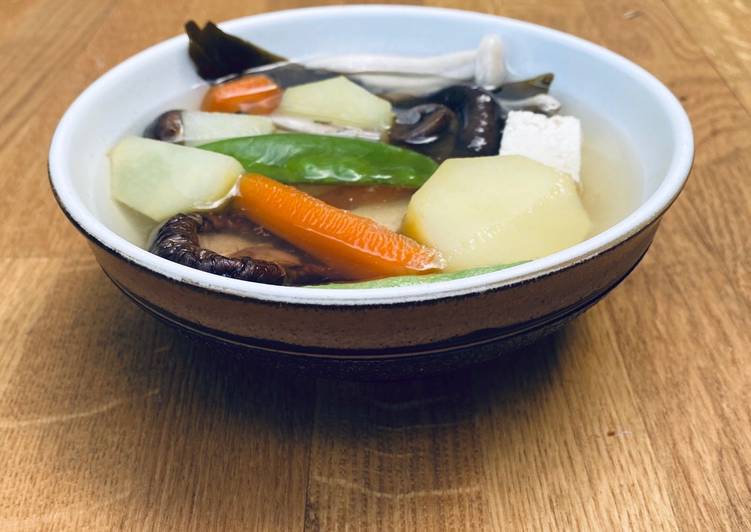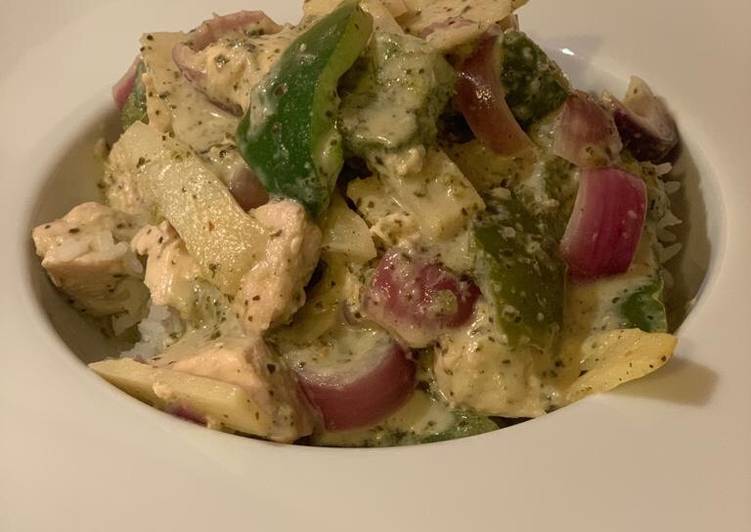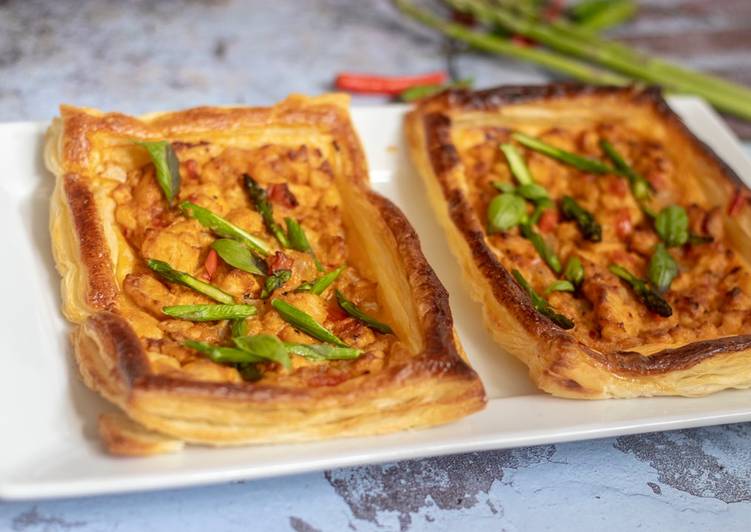
Hello everybody, it is Jim, welcome to our recipe page. Today, we’re going to make a distinctive dish, kenchinjiru (shojin ryori) japanese veggie soup 🌱. One of my favorites. For mine, I’m gonna make it a little bit tasty. This will be really delicious.
Kenchinjiru (けんちん汁) is a hearty plant-based Japanese soup that's made with a vegan shiitake mushroom and konbu stock. Loaded with veggies and protein, it's a delicious one-pot meal that will take the chill out of even the coldest of days. This post may contain affiliate links. The original Kenchinjiru was considered as a shōjin ryōri (精進料理) or traditional Buddhist temple cuisine, which consists of a vegetarian or vegan diet.
Kenchinjiru (Shojin Ryori) Japanese Veggie Soup 🌱 is one of the most favored of recent trending meals in the world. It’s simple, it is quick, it tastes delicious. It’s appreciated by millions every day. Kenchinjiru (Shojin Ryori) Japanese Veggie Soup 🌱 is something which I’ve loved my whole life. They are nice and they look fantastic.
To get started with this recipe, we have to first prepare a few ingredients. You can cook kenchinjiru (shojin ryori) japanese veggie soup 🌱 using 14 ingredients and 3 steps. Here is how you can achieve it.
The ingredients needed to make Kenchinjiru (Shojin Ryori) Japanese Veggie Soup 🌱:
- Make ready Mushrooms (enoki, oyster, chestnut)
- Get Tofu (medium cut into squares)
- Make ready Mushrooms
- Make ready Carrots
- Take Chinese cabbage
- Prepare Root veg or squash
- Prepare Seasonal green veg
- Prepare Daikon/mooli (I used pink radish)
- Make ready Soy sauce (optional)
- Get Squash
- Make ready Dashi
- Make ready Shiitake mushroom
- Make ready Kombu seaweed
- Prepare Water (just enough to cover veggies)
Root vegetables and tofu are sautéed and cooked in flavoured dashi broth. This classic Japanese soup is hearty yet low in calories, full of fiber, and just all around good for The name kenchinjiru (けんちん汁)derives from the Zen Buddhist temple where it was first made (or so it's Since kenchinjiru is a shojin ryouri or temple cuisine dish, the basic version given here is vegan. Read "Shojin Ryori A Japanese Vegetarian Cookbook" by Danny Chu available from Rakuten Kobo. Shojin ryori is the art of Japanese vegetarian cuisine that originated from the Japanese Zen temples, but is today widel.
Steps to make Kenchinjiru (Shojin Ryori) Japanese Veggie Soup 🌱:
- Prepare the Dashi stock by washing and then soaking the shiitake and kombu for at least an hour. Then heat for 15 minutes but don’t boil. If you taste it should already taste delicious. This is such an important part of the recipe and gives the umami taste.
- Cut the veg into similar sized pieces. This is important in zen cooking As it allows the veg to cook for the minimum amount of time and retain nutrients. Add a few squares of medium or firm tofu. You can use a soft tofu but add at the last minute or it will crumble.
- Simmer the veg in the Dashi until cooked. Only use just enough to cover the veg to help retain the nutrients of the vegetables. Don’t overcook, they should still have some bite. Add soy sauce to taste if using.
Read "Shojin Ryori A Japanese Vegetarian Cookbook" by Danny Chu available from Rakuten Kobo. Shojin ryori is the art of Japanese vegetarian cuisine that originated from the Japanese Zen temples, but is today widel. Great recipe for Kenchinjiru (Shojin Ryori) Japanese Veggie Soup 🌱. Kenchinjiru is a clear soup with a lot of vegetables. This meatless but hearty hot soup is a great dish in colder weather, and perfect to serve a big crowd for The only thing you don't see in Kenchinjiru is meat or fish.
So that is going to wrap it up with this exceptional food kenchinjiru (shojin ryori) japanese veggie soup 🌱 recipe. Thanks so much for your time. I’m sure that you will make this at home. There’s gonna be more interesting food in home recipes coming up. Don’t forget to bookmark this page on your browser, and share it to your family, colleague and friends. Thank you for reading. Go on get cooking!

